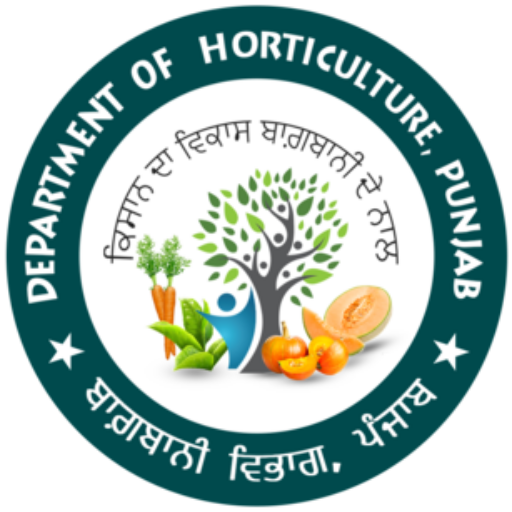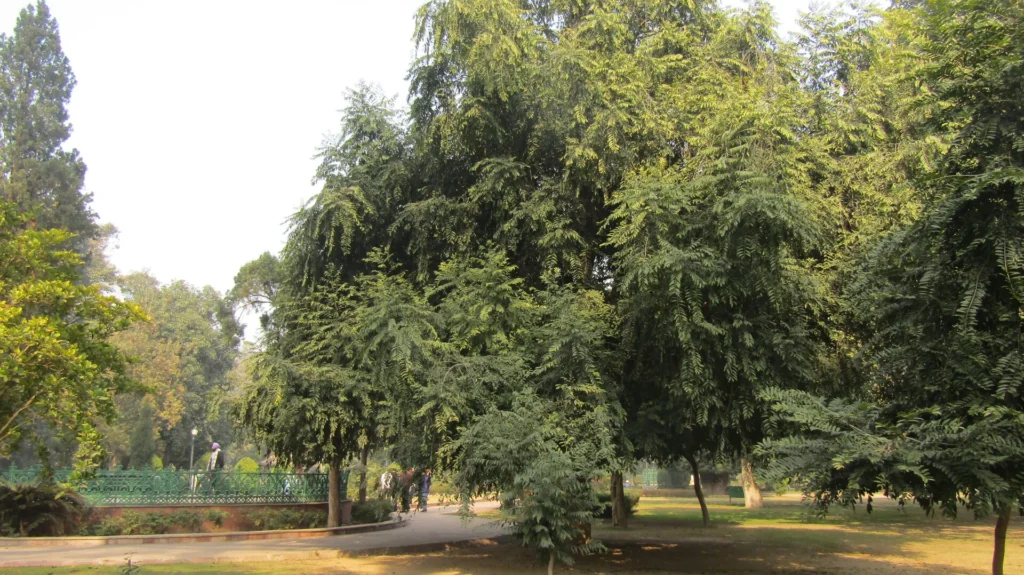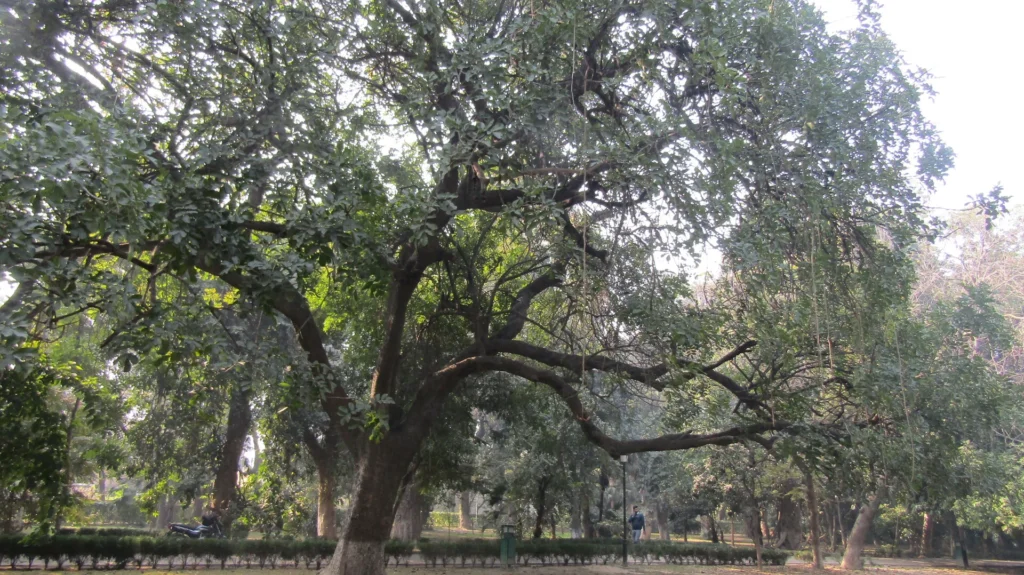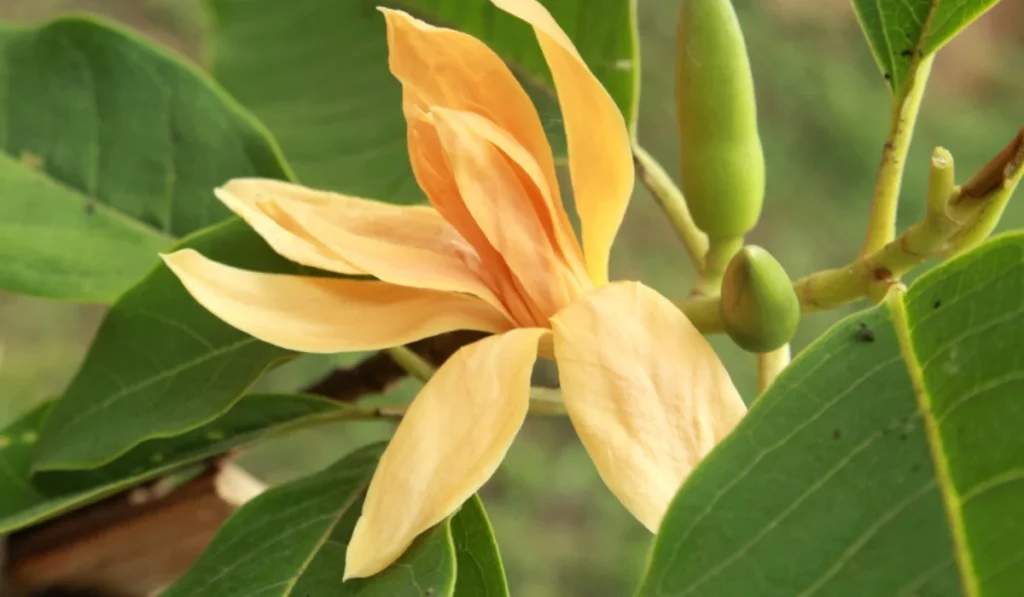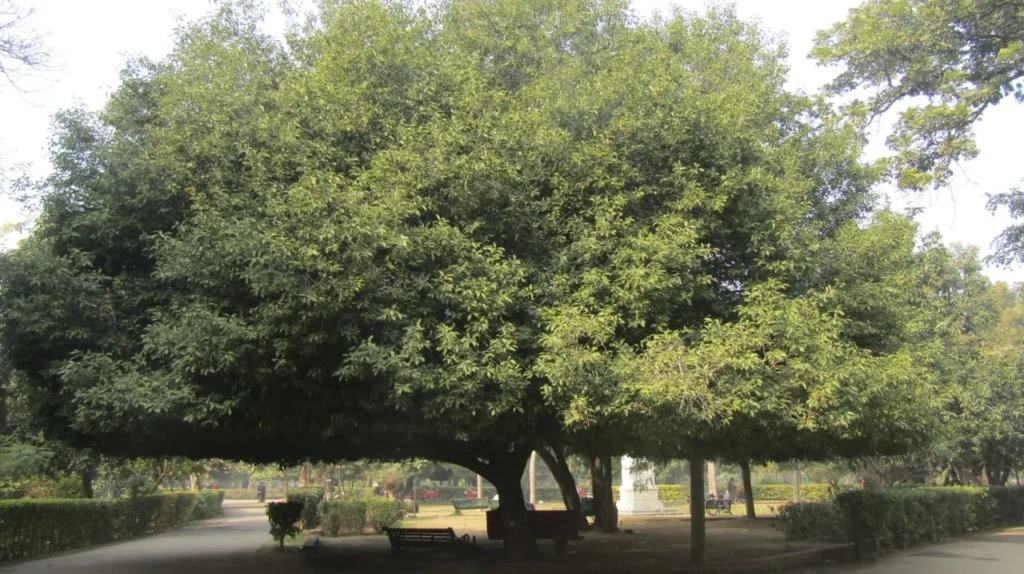Magnolia champaca, known in English as Saun champa or champak is a large evergreen tree in the family Magnoliaceae. It was previously classified as Michelia champaca. It is known for its fragrant flowers, and its timber used in woodworking.
- Kingdom: Plantae
- Characteristic feature: Tracheophytes
- Type of seed: Angiosperms
- Order: Magnoliales
- Family: Magnoliaceae
- Genus: Magnolia
- Subgenus: Magnolia subg. Yulania
- Species: M. champaca

The tree is native to the Indomalayan realm, consisting of South Asia, Southeast Asia−Indochina, and southern China. It is found in tropical and subtropical moist broadleaf forests ecoregions, at elevations of 200–1,600 metres. It is native to the Maldives, Bangladesh, Cambodia, China, India, Indonesia, Malaysia, Myanmar, Nepal, the Philippines, Thailand, and Vietnam. In its native range Magnolia champaca grows to 50 metres or taller.
Its trunk can be up to 1.9 metres in diameter. The tree has a narrow umbelliform crown. This illustrious tree unveils its reproductive splendor through strongly fragrant flowers that cast a mesmerizing spell in varying shades of cream to yellow-orange.
At the heart of Magnolia champaca’s reproductive spectacle are its obovoid-ellipsoid carpels. These floral structures play a pivotal role, orchestrating the creation of life as they develop and mature. During the months of September to October, these carpels gracefully yield 2−4 seeds, each encapsulating the potential for new growth and continuity within the species.
The fragrant allure of the flowers serves as a strategic enticement, attracting not only the admiring gazes of humans but also a myriad of pollinators. Butterflies and hummingbirds, charmed by the sweet-scented nectar, become unwitting accomplices in the tree’s reproductive journey as they flit and flutter among the blossoms, facilitating the crucial process of pollination. As the seeds develop, adorned with protective arils, they become highly attractive offerings to the feathered denizens of the ecosystem. Birds, drawn by the promise of nourishment and enticed by the aril-covered seeds, actively participate in the dispersal of Magnolia champaca genetic legacy. This harmonious interplay of fragrance, pollination, and seed dispersal underscores the intricate and symbiotic reproductive strategy that defines the life cycle of this botanical marvel.
Daily Use Case
The flowers are used in South Asia, especially India, for several purposes. They are primarily used in worship ceremonies, whether at home or out in temples, they are also more generally worn in hair by girls and women as a means of beauty ornament as well as a natural perfume. Flowers are floated in bowls of water to scent the room, as a fragrant and colourful decoration for bridal beds, and for garlands. The tree was traditionally used to make fragrant hair and massage oils. Jean Patou’s famous perfume, ‘Joy’, the second best selling perfume in the world after Chanel No. 5, is derived in part from the essential oils of champaca flowers. The vernacular name “Joy perfume tree” comes from this. Many niche perfumers are now once again using Champaca Absolute as single note fragrances.
A scent similar to the scent of this plant is said to be emitted by a civet in Sri Lanka, Paradoxurus montanus. Because all the other civets are known to emit very unpleasant odours, this species is renowned for emitting a pleasant odour similar to this plant’s scent. In its native India and Southeast Asia, champaca is logged for its valuable timber. It has a finely textured, dark brown and olive-colored wood, which is used in furniture making, construction, and cabinetry. Magnolia champaca is cultivated by specialty plant nurseries as an ornamental plant, for its form as an ornamental tree, as a dense screening hedge, and for its fragrant flowers.
